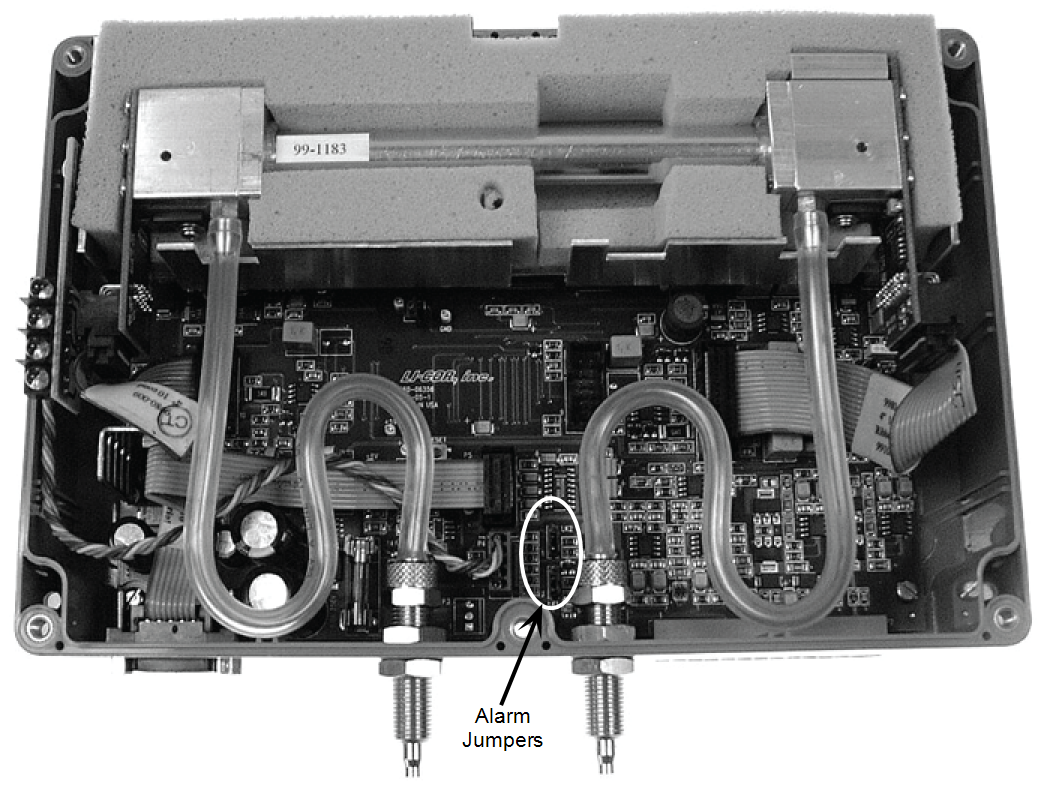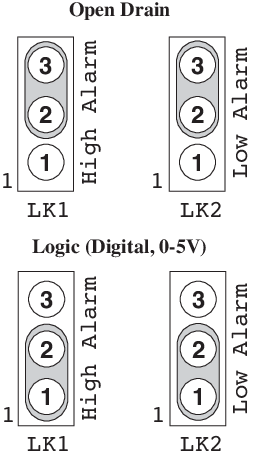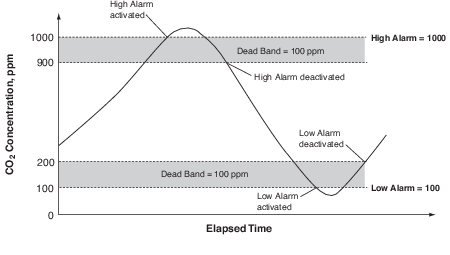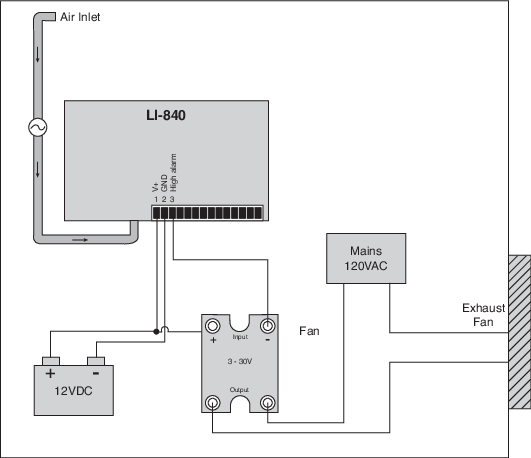Power On
Low Battery Indicator
The low battery LED on the LI-820 top panel will illuminate when the battery voltage drops below 10.5 volts. The LI-820 will continue to operate with a low battery; there will, however, be a corresponding reduction in performance.
Alarms
The LI-820 is equipped with high and low alarms, which can be configured as open drain (open collector) or 0-5V output (TTL levels) using jumpers on the main PC board (Figure 2- 1). Figure 2-2 shows the position of the jumpers for each of the two alarm conditions.
TTL stands for Transistor-transistor logic, which commonly refers to a signal level where the “on” voltage is near +5 volts. This is the default alarm jumper position in the LI-820, whereby whenever a high or low alarm is triggered, the LI-820 outputs a +5V signal.
The LI-820 alarms can also be configured as open drain (open collector), which is a circuit technique that allows multiple devices to communicate bi-directionally on a single wire.
Open drain/open collector devices sink (flow) current in their low voltage active (logic 0) state, or are high impedance (no current flows) in their high voltage non-active (logic 1) state. These devices usually operate with an external pull-up resistor that holds the signal line high until a device on the wire sinks enough current to pull the line low. Multiple devices can be attached to the signal wire. If all devices attached to the wire are in their non-active state, the pull-up will hold the wire at a high voltage. If one or more devices are in the active state, the signal wire voltage will be low.


In addition, a "dead band" value can be set in software for both high and low alarms. To understand how the alarms and dead band values work, look at the diagram below.
In this chart, the low and high alarm values are set to 100 ppm and 1000 ppm, respectively. The dead band value in both alarms is set to 100 ppm. When the CO2 concentration reaches 1000 ppm, the high alarm is activated, and remains active until the concentration drops below 900 ppm. When the CO2 concentration falls below 100 ppm, the low alarm is activated, and remains active until the concentration rises above 200 ppm. Your choice for the dead band value(s) depends on your application, and the fluctuation in CO2 concentrations over time.
Note: Increasing the signal average value in software (see Settings Window; Options; Filter in Section 3) can help reduce fluctuations in readings.
Alarm LEDs can be viewed on the top panel of the LI-820. Terminals 3 and 5 on the terminal strip are connected to the High and Low alarms, respectively. This is useful in cases where you want to connect an audible alarm, for example, or a relay switch to operate another device that will raise or lower the CO2 concentration to the desired level. The schematic diagram below shows how the high alarm could be connected to a relay switch that triggers an exhaust fan in a greenhouse environment. These relays could also be used to trigger devices such as automatic dialers, alarms, pumps, and valves in industrial and other environments.
A list of suppliers of electronic relay switches can be found in Appendix C.
NOTE: Consult your local electrical codes before wiring, and/or have a professional electrician wire your application.


